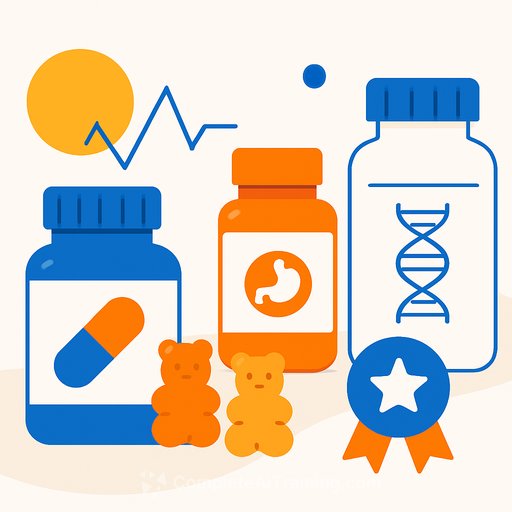Building the Future: How AI Transforms the Developer Workflow
Software development used to be a grind of specs, tickets, and patches. AI has turned that grind into a smarter flow. It strips out repetition, surfaces risk early, and gives teams room for actual product thinking. This isn't about replacing talent-it's about removing drag.
For product teams, this means faster cycles, tighter feedback loops, and clearer decision-making. The tools are ready. The workflow is changing. Here's how to use it.
1) Planning with AI: clarity before code
Planning no longer needs a week of docs and guesswork. AI can parse past projects, user stories, and feedback to give teams a crisp starting point. You get fewer blind spots and better prioritization.
- Requirement synthesis: Turn raw inputs into structured, scoped requirements with risks highlighted.
- Time and scope estimates: Use historical velocity, complexity, and similar work to set realistic timelines.
- Architecture options: Get proposals sized to performance, scale, and future change-then choose with confidence.
Platforms like the Vibe Solutions platform make this planning step repeatable instead of reinvented every sprint.
2) Coding with AI: speed without sloppiness
AI coding assistants understand context across files and frameworks. They suggest code that fits the architecture instead of dumping snippets. The benefit isn't just speed-it's fewer mistakes and more time for logic.
- Faster implementation: Reduce boilerplate and common patterns to minutes.
- On-demand learning: Get explanations and examples inside the editor instead of tab-hopping through docs.
- Safe refactors: Restructure code with impact analysis across dependencies.
- Error prevention: Catch risky logic, dead code, or edge cases before they land in staging.
If you want data on impact, GitHub reports meaningful productivity gains from AI pair programming tools in controlled studies.
3) Testing with AI: coverage that keeps up
Testing used to be the bottleneck. AI flips that. It generates unit, integration, and end-to-end tests based on actual code paths, then points you to the hot spots most likely to fail.
- Auto-generated tests for broader coverage with less manual effort.
- Bug prediction based on complexity patterns and historical defects.
- Guided debugging that traces cause, not just symptoms.
- Shorter regression cycles, more frequent releases.
4) Deployment with AI: fewer surprises, smoother rollouts
Releases shouldn't feel risky. AI brings consistency to environments and transparency to risk. Teams ship smaller, safer, and more often.
- Automated environment setup across dev, staging, and prod.
- Pre-release performance checks and bottleneck alerts.
- Rollout strategies with staged exposure and real-time monitoring.
- Live anomaly detection to prevent dips during traffic spikes.
5) Collaboration with AI: cleaner handoffs, faster decisions
Great products come from tight collaboration. AI reduces friction across roles by translating intent-business to technical and back again.
- Clear documentation generated from meetings, threads, and code comments.
- Shared context for PMs, designers, and engineers to reduce rework.
- Instant review suggestions that make feedback loops faster and more useful.
Tools like the Vibe Solutions platform keep everyone aligned without adding process bloat.
6) Maintenance and optimization: always-on product health
Launch is the starting line. AI keeps apps stable, fast, and safe without grinding the team down.
- Continuous monitoring across logs, usage, and performance signals.
- Security checks for permissions, configs, libraries, and known exploits.
- Automatic or suggested optimizations for queries, assets, and latency.
- User behavior insights to guide what to fix, improve, or build next.
7) What this means for developers
Developers aren't being replaced. Their work is moving up a level. Less typing, more thinking. Less firefighting, more product impact.
- More time on architecture, logic, and quality.
- Room to experiment with ideas that would've been shelved.
- Fewer late nights from last-minute issues.
- Faster skill growth from real-time guidance and examples.
8) The rise of AI-integrated platforms
Point tools help. Integrated platforms compound. Teams want planning, coding assistance, testing, deployment, and collaboration in one place so context doesn't get lost.
The Vibe Solutions platform shows how a connected stack reduces overhead and makes the whole workflow more reliable.
9) Rocket.new: design-to-code, without the friction
Rocket.new turns Figma files or prompts into clean, production-ready code. Designers focus on visuals. Developers refine logic. Both work in real time.
The result: fewer tool switches, faster delivery, and a smoother path from idea to live product.
10) What's next
- Personalized dev environments that adapt to each engineer's style.
- Feature suggestions based on market signals and user behavior.
- End-to-end automation with human approval at key checkpoints.
- Build once, deploy anywhere with better consistency across targets.
- Debugging agents that propose and verify fixes automatically.
How product teams can put this to work now
- Pick one area to automate this quarter: test generation, refactoring, or release checks.
- Adopt a platform that spans planning to deployment to reduce tool switching.
- Add AI quality gates: performance alerts, security scans, and risk flags before merge.
- Upskill the team so AI becomes a habit, not a side experiment with role-based courses.
Conclusion
AI strips away the slow parts of development and gives teams clearer paths to impact. Planning gets tighter. Coding gets cleaner. Testing, deployment, and maintenance get faster and more predictable.
Use platforms that blend into your process and keep control in your hands. From idea to release, AI can guide the work and help teams integrate Vibe Coding into a workflow that's faster, clearer, and built for real product outcomes.
Your membership also unlocks:






